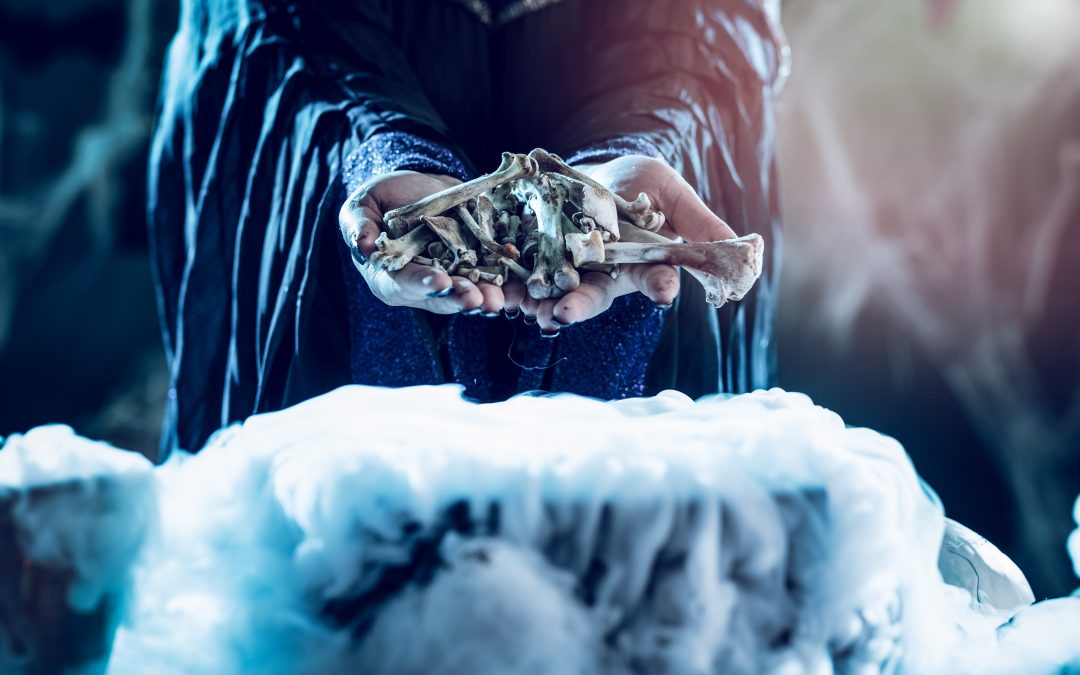West Lothian, located in Scotland, has a rich history of witchcraft dating back to the 16th century. The witches of West Lothian were believed to have supernatural powers and were often accused of using them to cause harm to others. Many were persecuted and executed during the witch hunts that took place across Scotland in the 17th century.
The exact number of witches who lived in West Lothian is unknown, but it is believed that there were several covens operating in the area during the height of the witch trials. Accusations of witchcraft were often made against women who were seen as outsiders or who were deemed to be behaving in an unusual manner. Some were accused of using their powers to cause illness or death, while others were accused of casting spells on crops or livestock. Despite the lack of evidence, many of these women were convicted and executed for their alleged crimes.
Origins of Witchcraft in West Lothian
Witchcraft has a long and complex history in West Lothian, with evidence of its practice dating back to the 11th century. The term “witch” originally referred to a practitioner of folk magic, who used their knowledge of herbs, charms, and divination to help their community. However, over time, the term became associated with evil and malevolent practices, and witches were often accused of causing harm to others through the use of magic.
The origins of witchcraft in West Lothian are closely tied to the region’s religious history. The area was predominantly Catholic until the Scottish Reformation in the 16th century, and many of the practices associated with witchcraft were seen as pagan or heretical by the new Protestant church. As a result, accusations of witchcraft were often used as a way to target those who were seen as deviating from the accepted religious norms.
Despite this, many people in West Lothian continued to practice folk magic and other forms of sorcery, often in secret. These practices were passed down through generations, with knowledge of herbs, charms, and divination being shared within families and communities.
In the 16th and 17th centuries, accusations of witchcraft became increasingly common in West Lothian, as they did throughout Scotland and Europe. Many of those accused were women, who were seen as particularly susceptible to the influence of the devil. Some were accused of causing harm to others through the use of magic, while others were accused of attending sabbats, or gatherings of witches, where they were said to worship the devil and engage in other nefarious activities.
Despite the widespread fear of witchcraft, there is little evidence to suggest that those accused of witchcraft in West Lothian or elsewhere were actually practicing magic or sorcery. Instead, accusations of witchcraft were often the result of social, political, or religious tensions, with those accused being scapegoated for problems within their communities.
Famous Witches of West Lothian
Margaret Thomson
Margaret Thomson was a Scottish woman who was accused of witchcraft in 1705. She was born in Mid Calder and lived in Livingston. Margaret was accused of causing illness and death to her neighbors through witchcraft. She was arrested and put on trial, where she confessed to being a witch. Margaret was found guilty and was executed by hanging.
Barbara Napier
Barbara Napier was a Scottish woman who was accused of witchcraft in 1591. She was born in Linlithgow and lived in Bathgate. Barbara was accused of causing harm to her neighbors through witchcraft. She was arrested and put on trial, where she was found guilty and was burned at the stake.
Janet Douglas
Janet Douglas was a Scottish woman who was accused of witchcraft in 1537. She was born in Linlithgow and lived in Edinburgh. Janet was accused of causing harm to King James V through witchcraft. She was arrested and put on trial, where she was found guilty and was burned at the stake.
Helen Duncan
Helen Duncan was a Scottish woman who was accused of witchcraft in 1944. She was born in Callander and lived in Edinburgh. Helen was accused of conducting séances and claiming to communicate with the dead during World War II. She was arrested and put on trial, where she was found guilty and was sentenced to nine months in prison.
Isobel Gowdie
Isobel Gowdie was a Scottish woman who was accused of witchcraft in 1662. She was born in Auldearn and lived in Nairn. Isobel was accused of confessing to being a witch and participating in a witches’ coven. She was arrested and put on trial, where she was found guilty and was executed by hanging.
In West Lothian’s history, there were many accusations of witchcraft, and these famous witches are just a few examples of the trials and executions that took place. The stories of these witches have been passed down through generations and continue to be a part of West Lothian’s history.
Witch Trials and Torture
The Trial Process
During the 16th and 17th centuries, witchcraft was considered a serious crime in West Lothian, Scotland. The accused were put on trial for practicing witchcraft, and the trial process was often harsh and unfair.
The accused were often subjected to a “trial by ordeal,” which involved various tests to determine if they were guilty of witchcraft. These tests included the “swimming test,” where the accused was tied to a chair and thrown into a river. If they floated, they were considered guilty of witchcraft.
The accused were also subjected to “spectral evidence,” which involved the testimony of witnesses who claimed to have seen the accused in the form of a witch. This type of evidence was unreliable and often led to false convictions.
Methods of Torture
If the accused were found guilty of witchcraft, they were subjected to various methods of torture to extract a confession. These methods included:
- The “witch’s bridle,” which involved placing a metal mask with spikes inside the mouth of the accused to prevent them from speaking.
- The “thumbscrew,” which involved crushing the fingers of the accused with a metal device.
- The “rack,” which involved stretching the accused on a wooden frame until their joints dislocated.
If the accused still did not confess, they were often subjected to execution. The most common methods of execution for witches in West Lothian were hanging and burning at the stake.
The Witchcraft Act of 1735 eventually put an end to the witch hunts and the use of torture in witch trials. However, it is estimated that hundreds of people were tortured and executed for witchcraft in West Lothian during the 16th and 17th centuries.
Witchcraft and Society
Public Perception
Witchcraft has been a controversial topic in Scotland for centuries. In West Lothian, suspicion of witchcraft was often associated with fear and superstition. The public perception of witches was largely negative, with many believing that they were in league with the devil and capable of causing harm to others through the use of magic.
Impact on the Poor and Vulnerable
The impact of witchcraft accusations on the poor and vulnerable was particularly devastating. Suspected witches were often elderly women who were already marginalized and living in poverty. They were easy targets for accusations and were often subjected to harsh treatment by authorities and the public.
In West Lothian, the North Berwick witches were a group of suspected witches who were accused of causing a storm that caused the death of King James VI’s wife. The accusations led to a wave of witch hunts across Scotland, resulting in the execution of many innocent people.
The impact of witchcraft accusations on society as a whole was also significant. The fear of witches led to the establishment of witchcraft laws and the persecution of suspected witches. The West Lothian Council, along with other local authorities, played a role in enforcing these laws, which often resulted in the execution of innocent people.
Witchcraft and Religion
Witchcraft has been associated with religion for centuries. Many people believed that witches were in league with the devil and practiced evil. This belief was particularly strong in the Christian faith, which saw witchcraft as a vice and a sin against God.
In Scotland, the Catholic Church played a significant role in the persecution of witches. The church saw witchcraft as a threat to its authority and believed that witches were working with evil spirits to harm others. As a result, many accused witches were tried and executed by the church.
However, not all religious groups saw witchcraft as evil. Some pagan religions, for example, saw witchcraft as a way to connect with spirits and nature. These witches were often seen as healers and wise women who used their knowledge of herbs and magic to help others.
Despite these differences in beliefs, the persecution of witches continued for centuries. It wasn’t until the 18th century that the witch trials began to decline in Europe. Today, many people still practice witchcraft as a religious or spiritual practice, and it is recognized as a legitimate religion in some countries.
Witchcraft in Folklore and Myth
Witchcraft has been a subject of fascination for centuries and has been a part of folklore and myth in many cultures. In West Lothian, witchcraft was believed to be a dark art that was practiced by individuals who had made a pact with the devil.
Magic and sorcery were often associated with witchcraft, and it was believed that witches had the power to cast spells and curses on their enemies. In some cases, witches were also believed to have the ability to heal the sick and to provide protection from harm.
In Scottish folklore, the Queen of the Fairies was often associated with witchcraft. It was believed that she would grant wishes to those who made offerings to her, but she could also be vengeful and punish those who crossed her.
Witches were often thought to operate in covens, which were groups of witches who would come together to perform rituals and spells. The Pendle Witches of Lancashire are one of the most well-known examples of a coven. In 1612, 12 women were accused of witchcraft and were put on trial. 10 of them were found guilty and were executed.
The term “warlock” is often used to refer to a male witch, but this is a relatively recent development. In traditional Scottish folklore, the term “warlock” was used to refer to a person who had broken their oath to the devil and had turned against other witches.
Decline and Legacy of Witchcraft
The Witchcraft Act of 1735
The Witchcraft Act of 1735 was a law passed in the United Kingdom that made it illegal to claim to have magical powers or to accuse someone of being a witch. The act was passed in response to the hysteria surrounding witchcraft at the time, which had led to many innocent people being arrested and imprisoned.
The act was also responsible for the decline of witchcraft in West Lothian. With the threat of imprisonment or execution, many people who had previously practiced witchcraft stopped doing so for fear of being caught.
Modern Perceptions
Despite the decline of witchcraft in West Lothian, the legacy of witches still lives on in the area. One of the most famous examples is the Witches’ Knowe, a hill located near the town of Linlithgow. According to legend, witches were said to have gathered at the site to perform rituals and cast spells.
Today, the Witches’ Knowe is a popular tourist attraction and is often visited by those interested in the history of witchcraft in the area.
It is important to note, however, that modern perceptions of witchcraft are often very different from those of the past. While many people still practice witchcraft today, it is generally seen as a harmless and peaceful spiritual practice rather than something to be feared and persecuted.

